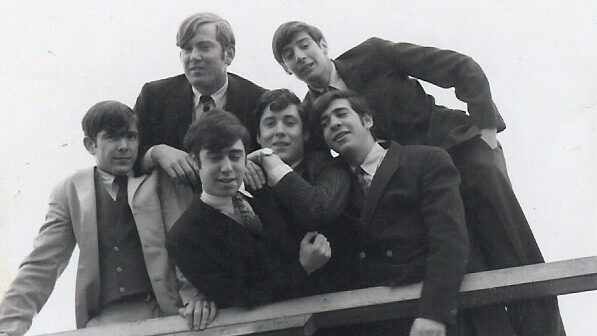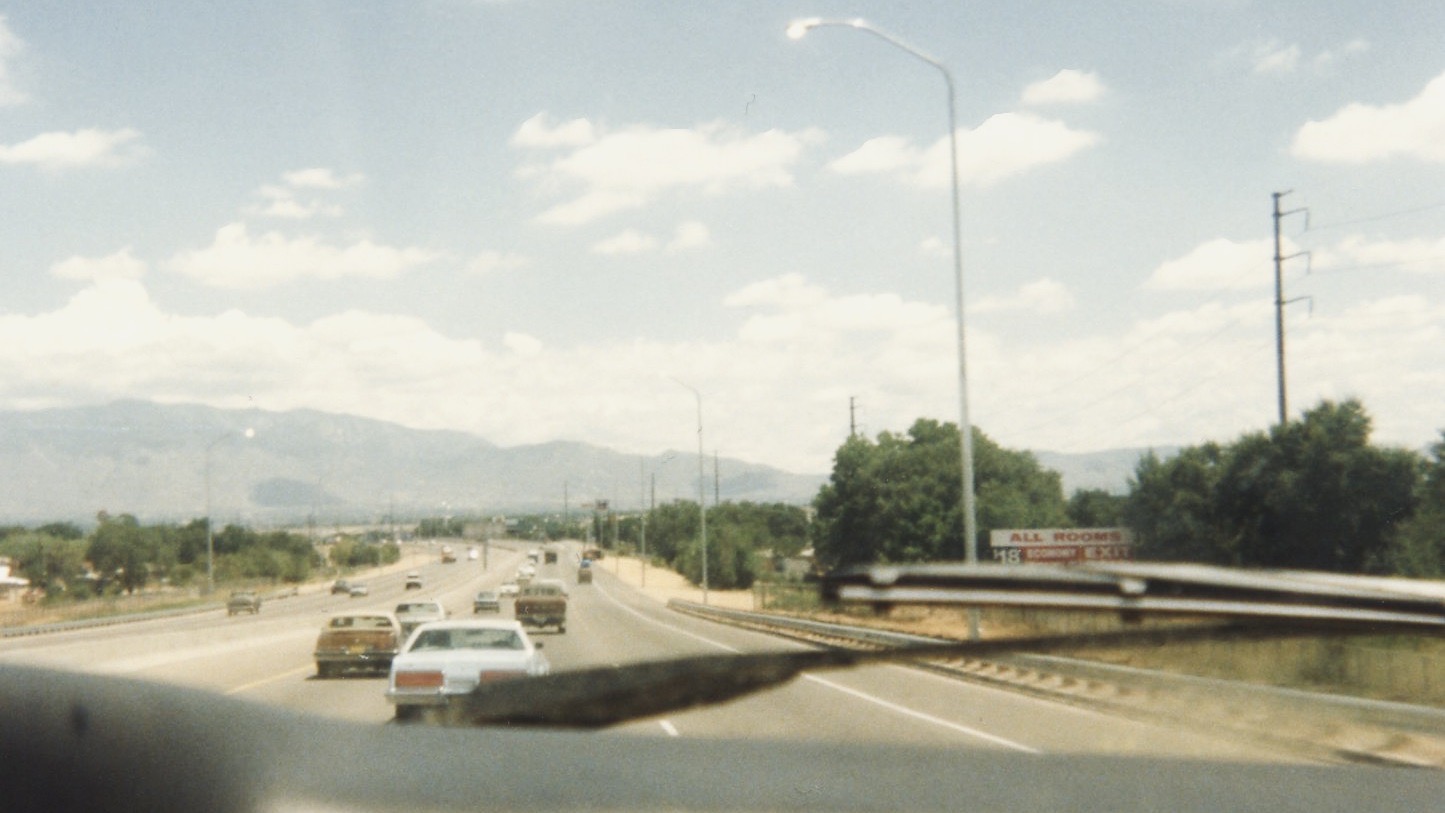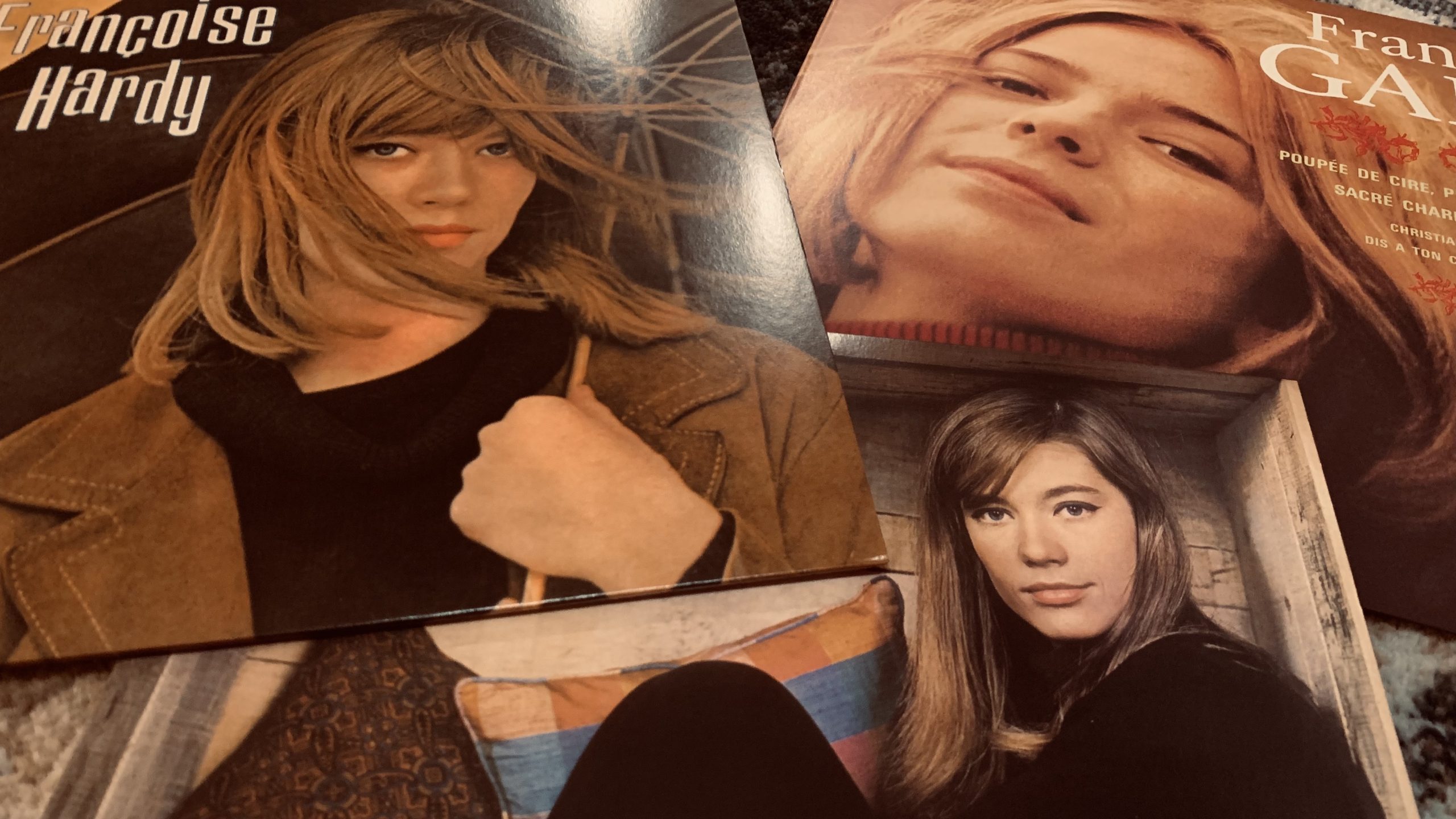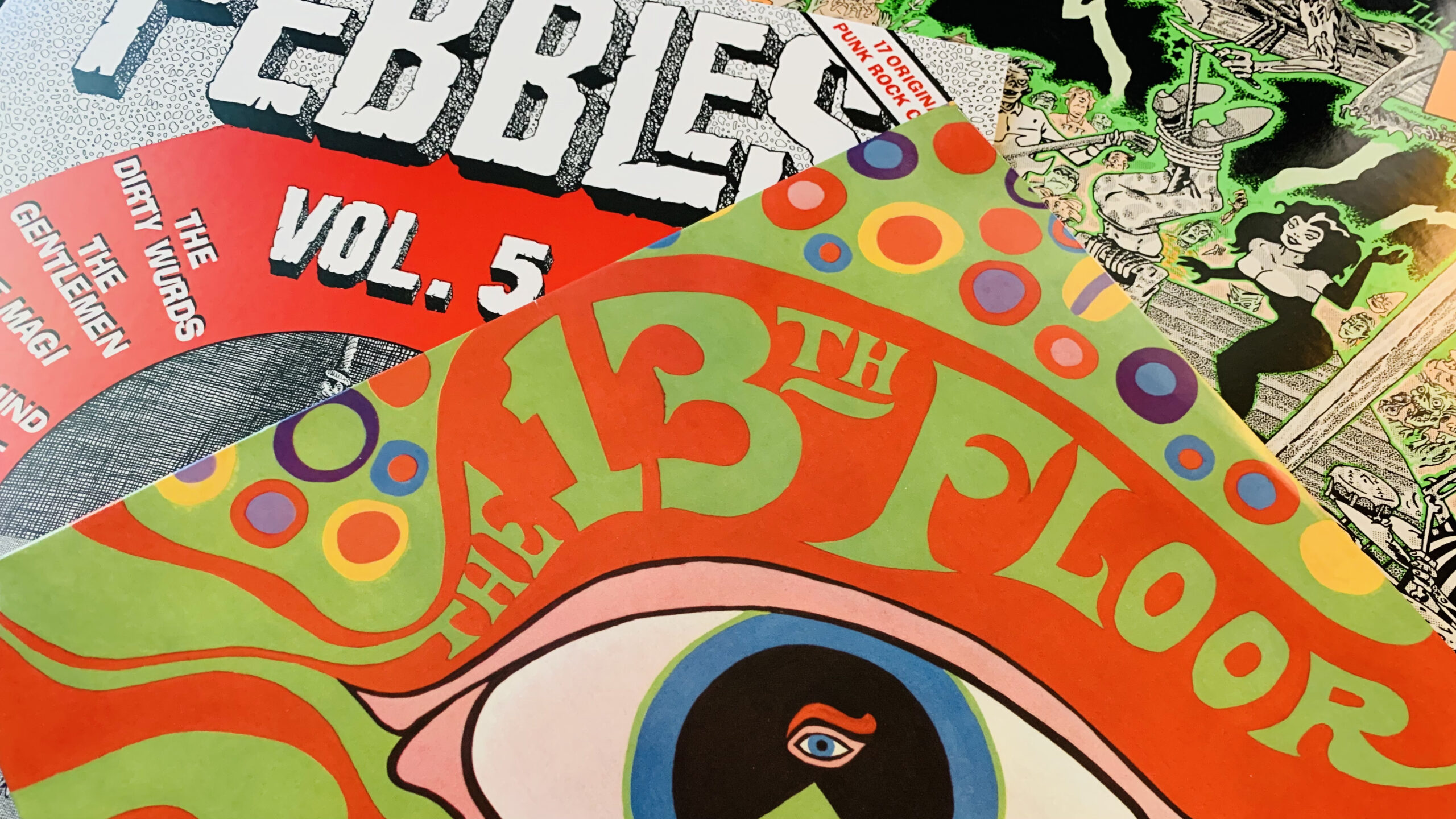
Our next stop on the Great American Garage Rock Tour takes us to the Lone Star State. Out in the scorching sun and dry air of Texas, an exciting new rock sound was emerging in the mid-sixties: a style undoubtedly influenced by contemporaneous happenings on other scenes across the United States, but with its own unique sonic contours and an unmistakable, uncompromising attitude.
At the helm of this movement was a generation of young Texans who – at least temporarily – traded their cowboy boots for Beatle boots, and largely eschewed the staid traditions of country music, while retaining the darkness, rebelliousness, and mystique of iconoclasts such as Johnny Cash and Hank Williams. When blended with the latest sounds in rock – not to mention the fuzz pedals that had become prerequisite by mid-decade – it became crystal clear that a cultural shift was afoot.
For those who have been following these features over the past several weeks, you may have noticed that the title of this one deviates from the norm. Yes, everything on the following list can safely be considered “garage rock,” and it’s true that nothing you hear in these tracks goes significantly deeper, faster, or heavier than say Portland’s The Lollipop Shoppe, Los Angeles’ The Bees, or Chicago’s The Cave Dwellers. However, when taken as a whole, it’s hard to deny that there was something different happening in Texas. Rather than just having a handful of outliers, the vast majority of the thirty songs represented here pushed up against – and often beyond – the “acceptable” limits of sixties-era rock music.
As a result, the groups here were, on average, far less commercially successful than their counterparts in the Pacific Northwest, New England, California, and the Midwest. Need proof? Roughly two-thirds of the bands in this feature released just one single. Few achieved radio play. Fewer signed recording contracts. Exactly one of them lasted long enough to release music in the 1970s. Ultimately, the payoff for the labors of these groups – if it ever came at all – tended to occur decades after the fact, when the scraps of their tiny catalogs were picked through for inclusion on garage compilations such as Nuggets, Pebbles, and Back From the Grave. Even still, many of these bands remain virtual unknowns, as one-third of the tracks featured are not even presently available on streaming services; you’ll have to go to the YouTube playlist to hear some great ones this time around.
So, what is it then that made these groups different? I think what you can hear in these songs is something resembling the emergence of an actual punk scene. These are recordings made by disaffected teens and early-twenty-somethings, and even if a lot of their specific gripes were about the usual girl troubles detailed in every other region, consider some important context. Texas teens were arguably beholden to tradition in a way that many of their American brethren weren’t; and pushing back against the norms established by older generations in any way was an act of genuine rebellion. Boston’s The Barbarians could make a tongue-in-cheek laugh out of a song like “Are You a Boy or Are You a Girl,” and, honest question: could a Texas group have? Rock-obsessed L.A. teens could grow their hair long, or wear the latest fashions with little more than a second glance. Same goes for kids in San Francisco, New York, and plenty of other American cities. These Texas rock kids were genuine outcasts though. You can hear it in their music. One of these singers quite specifically talks about how “football, basketball, and track just ain’t my kind of scene.” Instead, it was in their bands that these kids found community, and it stands to reason that a sense of inter-band camaraderie formed as well. As that happened, one group would inevitably take cues from another, and the complex relationship between fellowship and rivalry would push the music in more extreme directions.
I kept a few of the Texas scene’s biggest bands here deliberately. Any thorough survey of American garage rock requires discussion of The 13th Floor Elevators, The Zakary Thaks, and the early recordings of the Sir Douglas Quintet. However, with the remaining groups, try to listen for the camaraderie that I described above. Maybe it’s my imagination, but having once been an outcast-turned-bandleader myself, I think it’s there. And even if it’s not, enjoy the ride regardless.
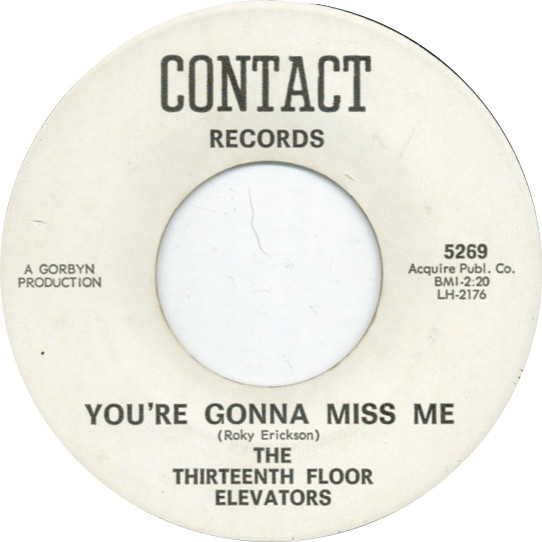
In many of these examinations of regional garage rock scenes, there’s often one band whose presence looms particularly large over other area acts. What The Sonics represented to the Pacific Northwest, or what The Remains were to New England, Austin’s 13th Floor Elevators served a similar function to Texas rock groups in the mid-sixties. They weren’t the first notable band on the scene, but they were among the earliest to chart nationally. That flirtation with national success came with the group’s debut single: “You’re Gonna Miss Me.” Featuring a wild performance by vocalist/guitarist Roky Erickson – and the signature electric jug work of Tommy Hall – the mind-bending recording left a distinct impression on all who heard it upon its early 1966 release, as plenty of the following tracks in this feature will show.
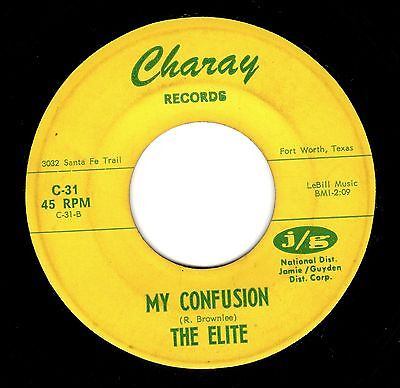
Reportedly one of the rowdiest bands on the Dallas-Fort Worth scene, The Elite released just three singles between 1966-67. The best of these, “My Confusion” is a thoroughly Stones-y affair, with relentless momentum and attitude for days. The track would achieve an immortality of sorts when it was tapped as the opening selection to the inaugural volume of the Back From the Grave compilation series.
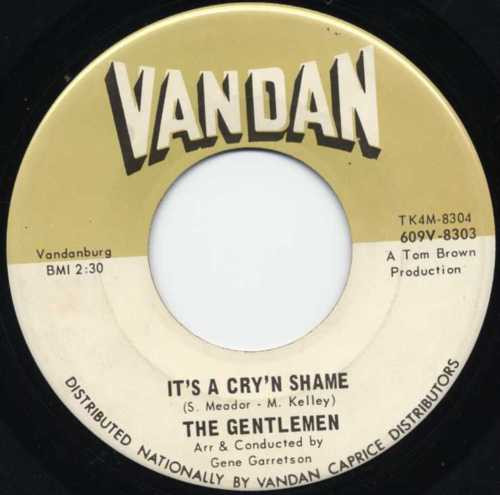
Another roarer from the Dallas-Fort Worth area, “It’s a Cry’n Shame” was an intense first showing by The Gentlemen. Singer/guitarist Seab Meador is the uncontested focal point of the track, offering both a memorable vocal performance and guitar solo. Regrettably, the group would fail to release any additional recordings before breaking up in 1968.
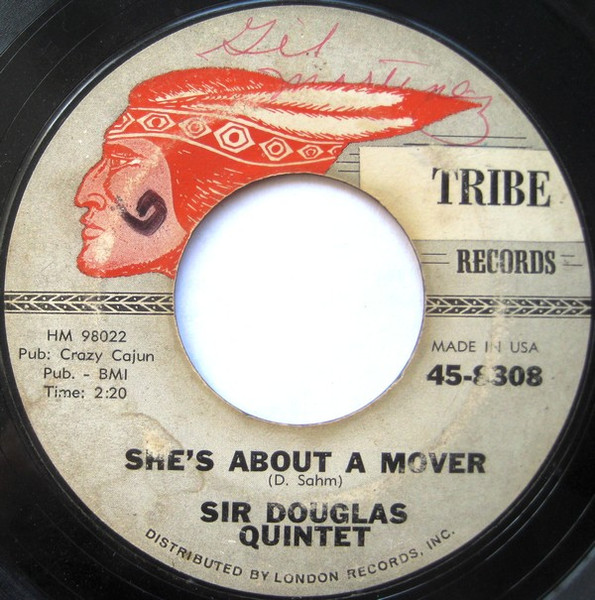
Formed by Doug Sahm in 1964, the Sir Douglas Quintet would prove to be among the most successful groups to emerge from Texas in the mid-sixties. Their debut single and best-known song, “She’s About a Mover” may not hit with the brute force of some of the other tracks on this list, but its catchy blues-based structure and blaring Vox Continental organ make for a fine exemplar of the garage rock sound.
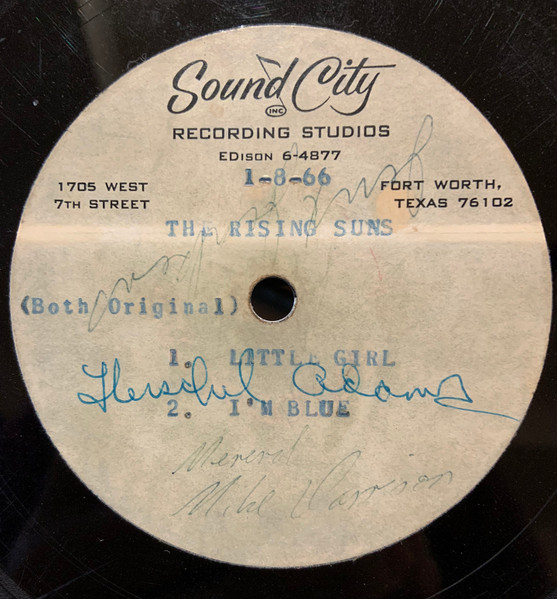
A raucous and relentless track, The Rising Suns turned in a winner with the fuzz-drenched “I’m Blue” – recorded in Fort Worth in early 1966. Unfortunately, the song would go unreleased for nearly forty years, finally appearing in 2004 as part of a split single with the contemporaneous San Antonio group, The Botumles Pit. The other original track that The Rising Suns recorded on that January 1966 day has yet to find release, but on its own, “I’m Blue” constitutes a sizable legacy for a garage band.
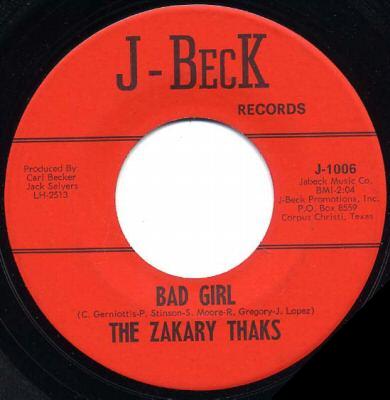
When garage aficionados get together to argue over the exact birthplace of punk rock, I’m sure those conversations eventually turn to this debut single from Corpus Christi’s Zakary Thaks. Thrashing through two minutes that feature an honest-to-goodness hardcore beat, “Bad Girl” is more manic than (just about) anything that had ever been recorded before. It had few predecessors, but plenty of followers.
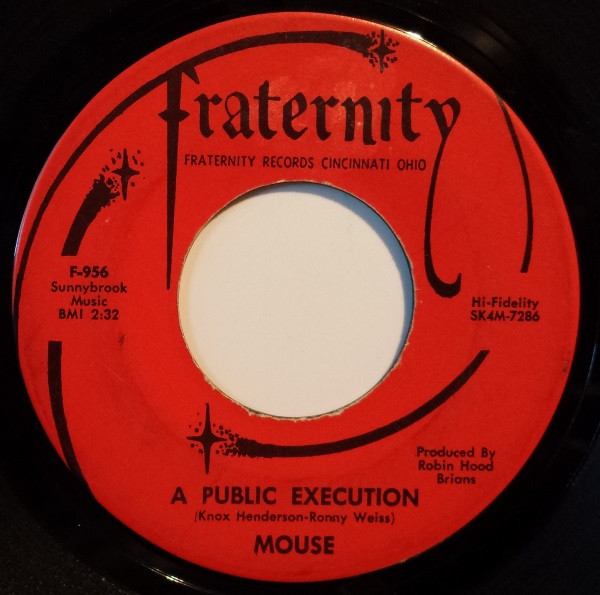
Arguably the most divisive track to appear on the landmark 1972 Nuggets compilation, “A Public Execution” draws more than a trace of influence from then-recent Bob Dylan singles such as “Like a Rolling Stone” and “Positively 4th Street.” While the resemblance is far more than a mere coincidence, I come down on the side of those who are willing to cut Ronny “Mouse” White and his band (identified on later singles as The Traps) a bit of slack. Dylan was unquestionably on the vanguard of rock in 1965; and even The Beatles wanted to ride on those coattails.
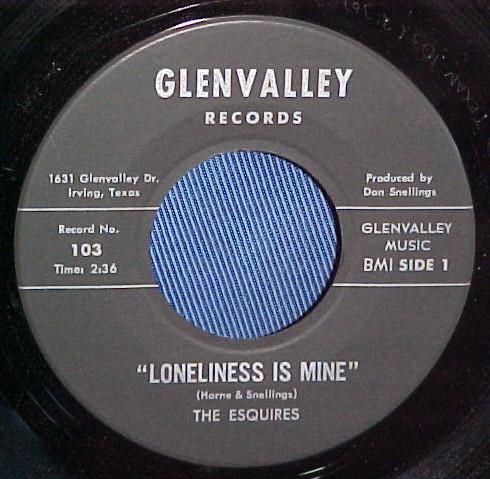
We hit a downbeat note with this debut A-side from The Esquires. The Irving, Texas group would release three singles during their brief career, and the consistent quality of their catalog has made them a cult favorite amongst garage aficionados. With that said, “Loneliness is Mine” stands out as a particularly compelling recording.
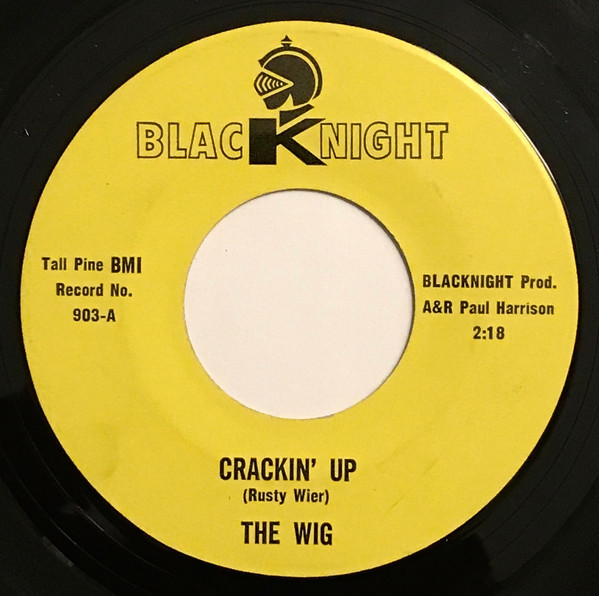
The Wig were an Austin quintet that released two singles in 1966. Their first A-side, “Crackin’ Up,” finds the group sounding remarkably confident on a shape-shifting track that bridges the gap between garage rock and the emergent sounds of psychedelia. Blistering pacing is offset by trippy interjections, augmented by studio effects and copious amounts of guitar fuzz.
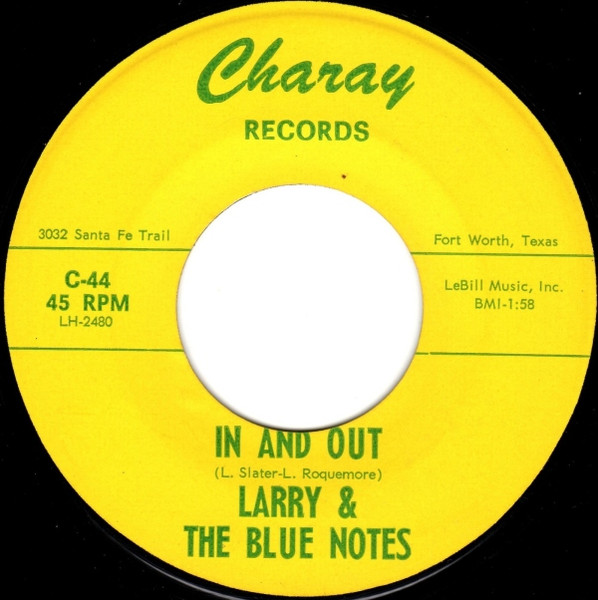
Fort Worth’s Larry & The Blue Notes first made their mark with 1965’s excellent “Night of the Phantom,” but it’s the following year’s “In and Out” that stands as the peak of the group’s catalog. All of the ingredients of a Texas punk classic are here: the whine of a harmonica, the blistering tempo, the dry guitar lead, and Larry Roquemore’s aggravated vocal performance.
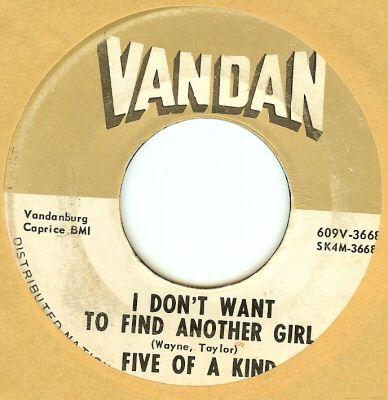
Heading back to Dallas, we dial things down a notch with the lone A-side from Five of a Kind. A moody, minor-key, pseudo-punk ballad, “I Don’t Want to Find Another Girl” discovers a sweet spot between plaintive and caustic. These kind of songs were common among mid-sixties garage groups, but when pulled off well – as is the case here – they can be extremely satisfying.
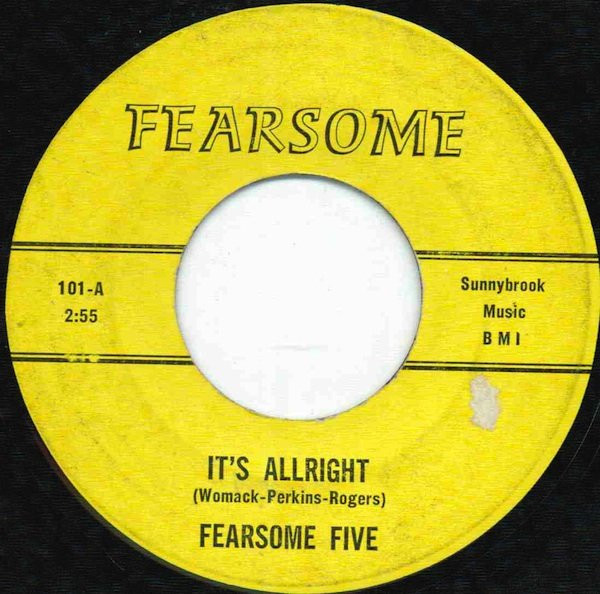
Fort Worth’s Fearsome Five veered more toward the “bitter” side of the aforementioned emotional spectrum on 1966’s excellent, self-released “It’s Allright.” The A-side to the group’s only single, “It’s Allright” rides an understated, mid-tempo arrangement to strong effect, with a catchy guitar riff providing one of the track’s most indelible hooks.
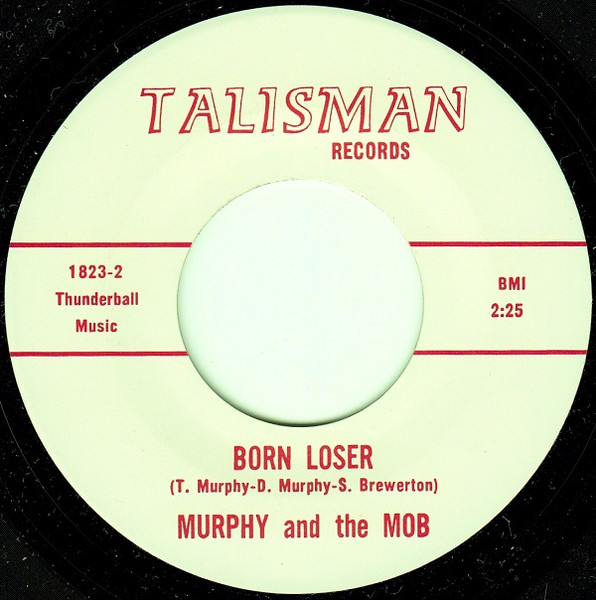
In addition to Mouse and The Traps, the town of Tyler also produced the less prolific Murphy and The Mob. Releasing just one single, the group’s impact was limited, but the B-side of that disc lives on as a garage classic. Incorporating the underdog theme that characterized some of the most iconic garage rock tracks, “Born Loser” has ultimately become a compilation staple, appearing on various volumes of Pebbles, Back From the Grave, and many others.
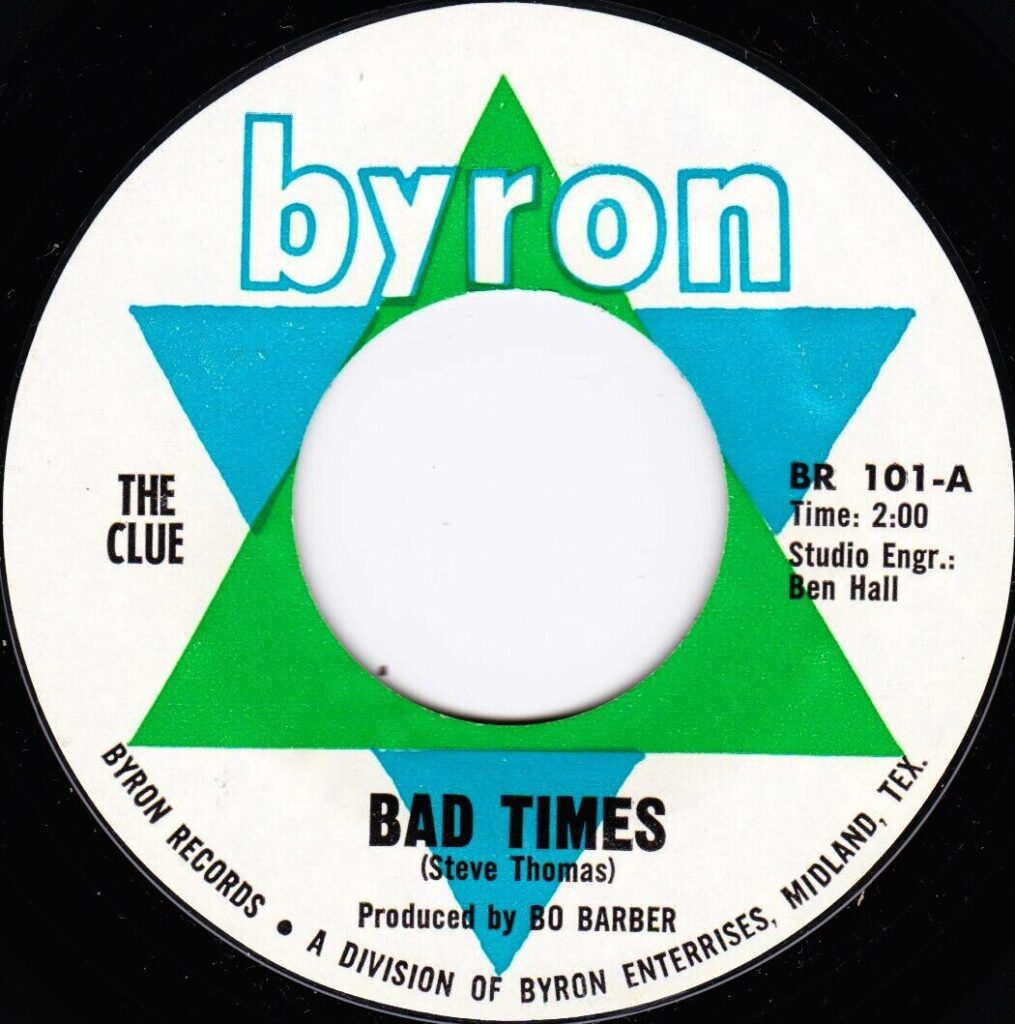
Midland didn’t house one of the biggest scenes in Texas, but the local group The Clue released one of the true Texas punk classics with 1967’s “Bad Times.” Penned by the group’s Steve Thomas, the song benefits from a little more instrumental nuance than most of the tracks on this list. There’s a swinging nature to the drums and bass, and both the punctuations of the chorus and brief rhythmic breakdowns provide some welcome contrast to the “full speed ahead” nature of most garage recordings of the era.
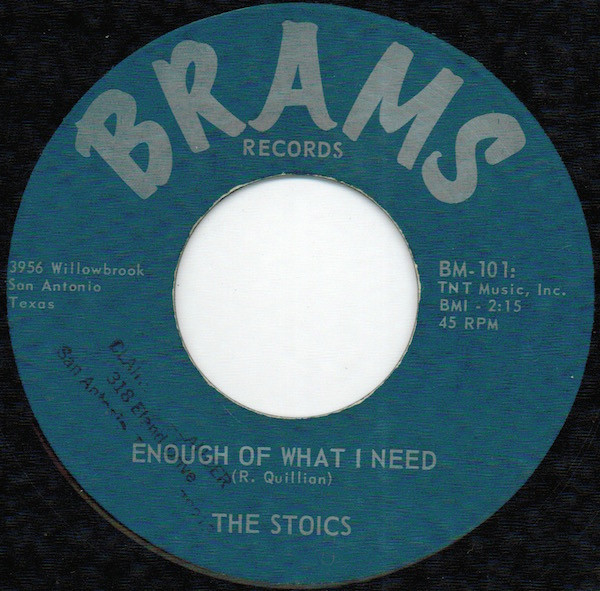
An appealingly dark chord progression sparks this 1967 A-side from The Stoics. Hailing from San Antonio, the band wouldn’t get a shot at a proper follow-up, but “Enough of What I Need” thrives with its jangly guitars, subtle backing vocals, and melancholy aura.
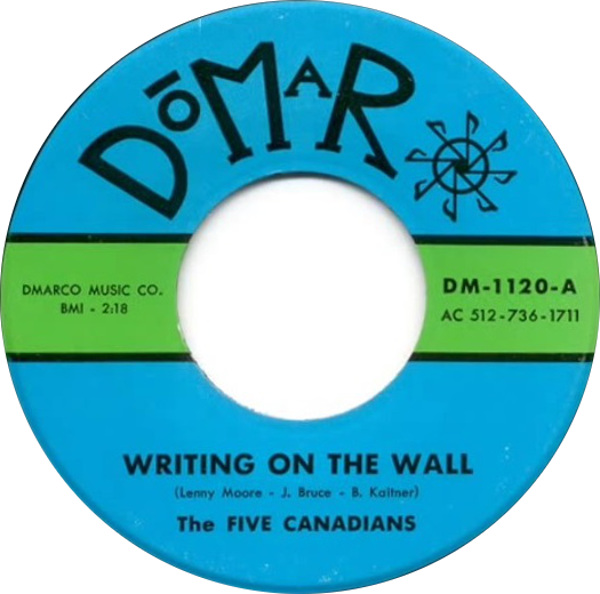
There were apparently no actual Canucks in this San Antonio group, but instead, the band’s moniker was allegedly crafted to give local show-goers the impression that they were in the presence of a quintet from the exotic, far away locale of…Toronto. Anyway, the band’s finest moment on record actually does trade in an atmosphere that could reasonably be described as “alluring.” “Don’t Tell Me” pulls off some interesting sonic tricks, with the use of heavy reverb, airy organ treatments, studio effects, low backing vocals, and a spacious setting.
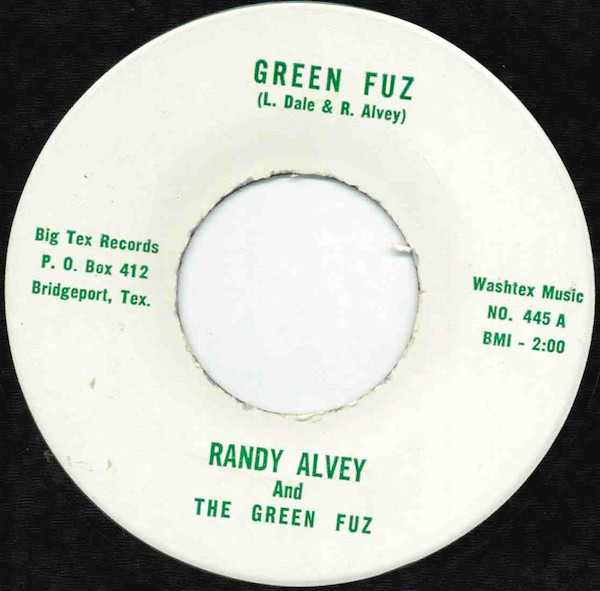
I tend to arrange these tracks in a (very loose) chronological manner, but this song – one of only two that were released post-1967 – seems completely untethered to a linear timeline. Perhaps because you could tell me that it was an outtake from a peak-era Guided by Voices album and I wouldn’t bat an eye. Recorded in an abandoned roadside cafe, “Green Fuz” failed to register upon release, in no small part because of its utterly primitive sound. However, the song was resuscitated by its appearance on the second volume of the Pebbles series in 1979. It was subsequently covered by both The Cramps and The Lemonheads, but nothing can quite match the disheveled charm of the original version.
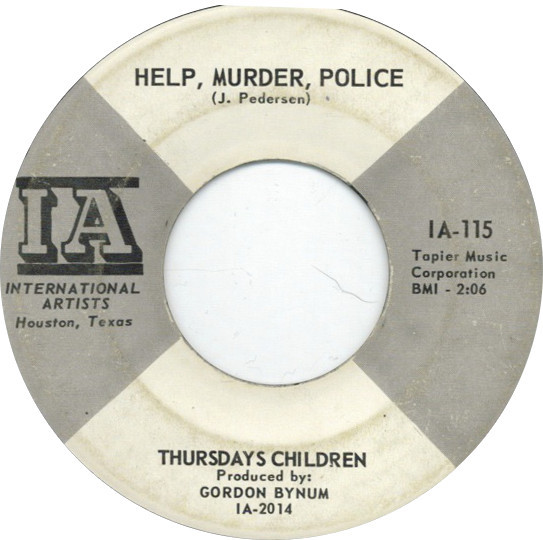
The Houston-based Thursday’s Children borrowed their name from a 1954 British documentary about a school for the deaf, and turned in their most intriguing song as the A-side to their penultimate single. “Help, Murder, Police” has an attention-grabbing title, but while it may sound like it promises a precursor to the anti-authority punk of a later generation, it’s actually a relatively-subdued (and really catchy) song on the poppier end of the Texas garage spectrum.
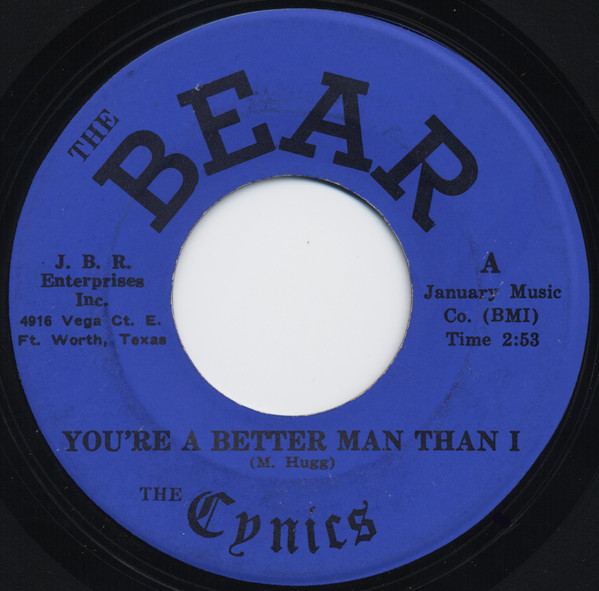
A solid rendition of The Yardbirds’ original 1965 version of “You’re a Better Man Than I” headed the only single from The Cynics – which was backed by a similarly faithful take on the London band’s “The Train Kept A Rollin’.” While “You’re a Better Man” would become something of a garage rock standard, the young Fort Worth-based quintet turned in one of the least-heard, but finest, versions of the track.
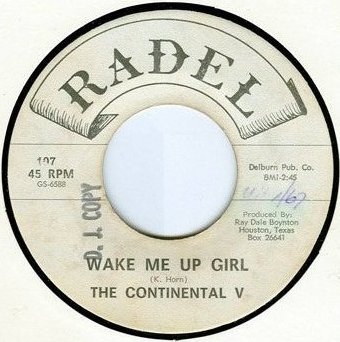
Yet another band with just one single to their name, Houston’s Continental V delivered a compelling opening salvo with their debut A-side. Full of dense imagery and ominous instrumentation, “Wake Me Up Girl” straddles the fine line between the bare-bones sound of garage and the surrealism of the psychedelic scene that was peaking at the time of its 1967 release.
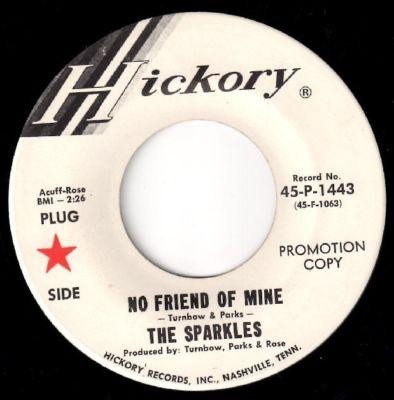
The final single from Levelland’s Sparkles is a sneering garage anthem, but – reflecting the countrified influences that linger on the edges of many of these tracks – it was composed by Jay Turnbow and Larry Parks of the Acuff-Rose songwriting machine. Produced by the pair, alongside Wesley Rose – son of the legendary Fred Rose – “No Friend of Mine” may have been a product of Nashville, but it’s a prime example of Texas punk.
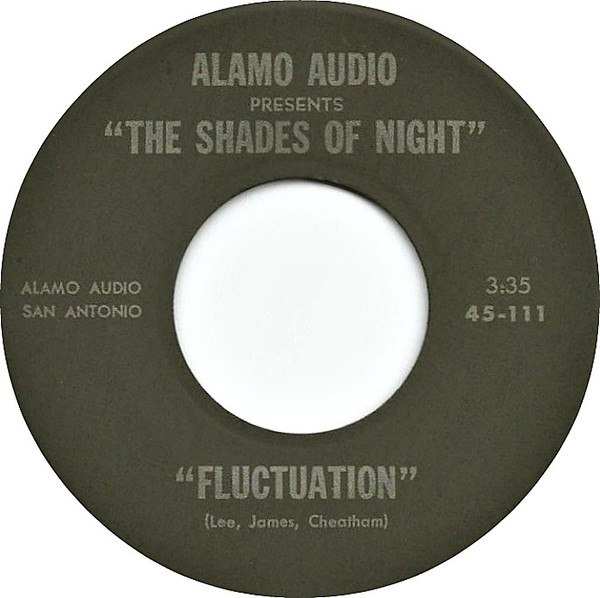
Hailing from the tiny town of Lytle, The Shades of Night traveled to nearby San Antonio to record their lone single. An original composition – though one might be able to argue that Roky Erickson deserved a songwriting credit, due to the track’s resemblance to The 13th Floor Elevators’ “You’re Gonna Miss Me” – “Fluctuation” is bold, brash, and loud as all hell.
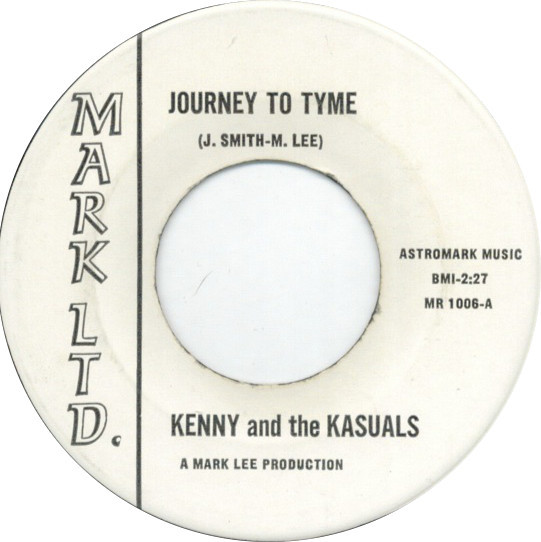
Sure, it may cop – or is it “kop” – a riff from The Kinks, but “Journey to Tyme” is an impressive A-side from Dallas’ Kenny and The Kasuals. Another track that bridges the gap between garage and psychedelia, “Journey” had already become a compilation mainstay by the time that it was tapped for Rhino’s expanded 1998 version of Nuggets.
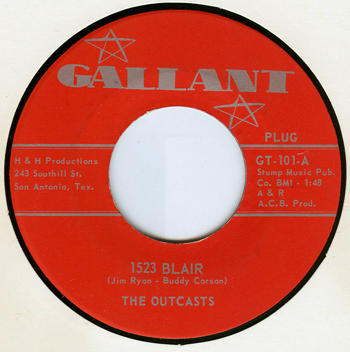
San Antonio’s Outcasts recorded five singles between 1965-67, and it’s their final A-side that races to the head of the pack. An exhilarating rush of energy and attitude, “1523 Blair” seems to prove that punk existed by early 1967, if it hadn’t already arrived earlier (it did). The Outcasts were one of the few bands on this list who recorded enough songs to release a compilation of their own – or have a Wikipedia entry for that matter – and this furious track stands as the apex of that catalog.
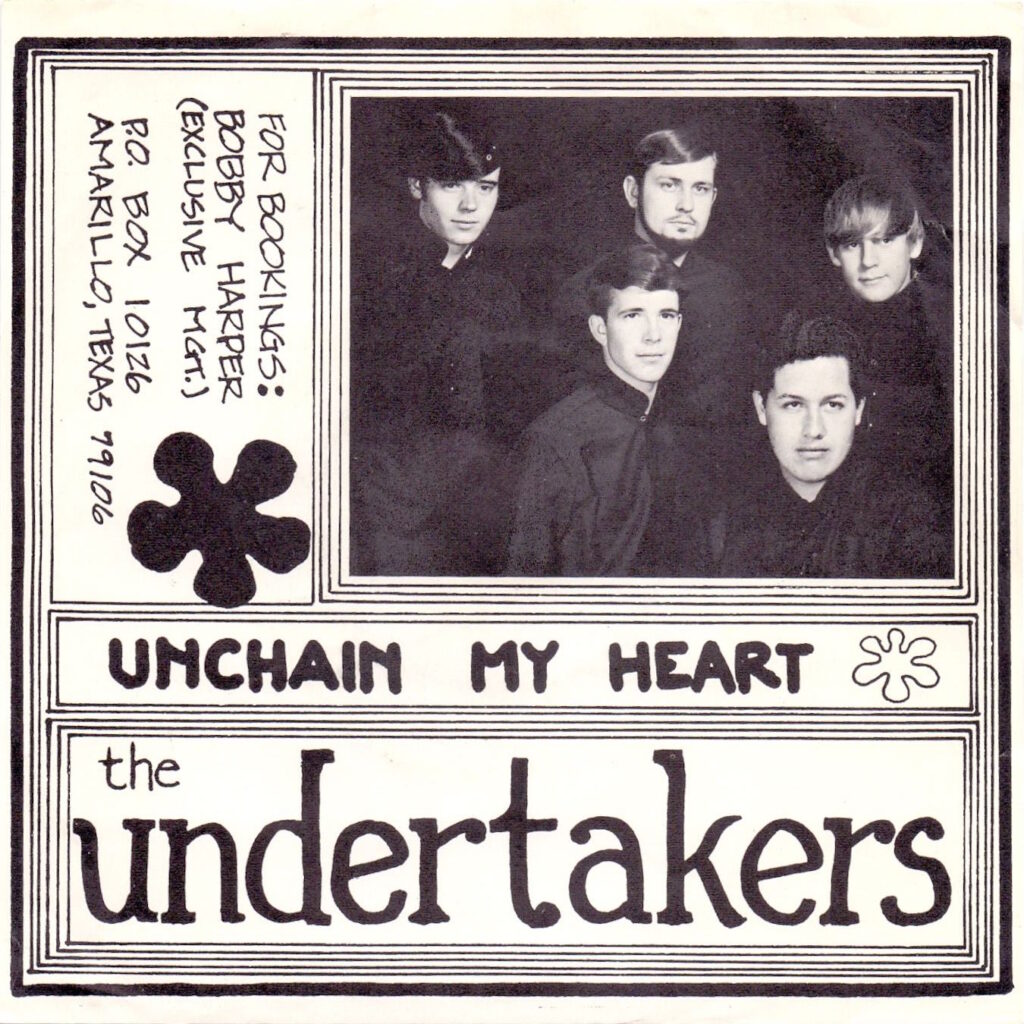
Though their lone A-side has become something of a mainstay of garage rock compilations, I’d argue that the flip side of The Undertakers’ “Unchain My Heart” is the superior track. “It’s My Time” finds the Amarillo group incorporating a spooky organ sound and deft time signature changes into a mesmerizing example of Panhandle punk.
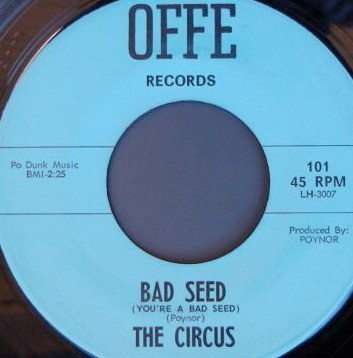
Another B-side that outclasses its A-track, “Bad Seed” was one of only two songs released by Odessa’s The Circus. Utilizing ominous imagery – Texas thunderstorms, forced servitude, and the notorious Parchman Farm – “Bad Seed” taps into the rebellious spirit that was always at the core of rock and roll, but it dials the attitude up significantly.
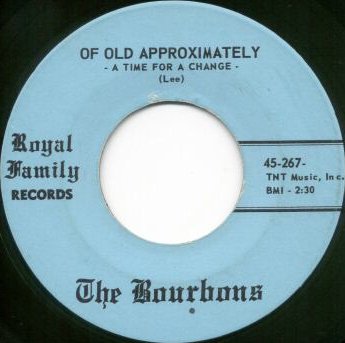
Stop me if you’ve heard this before, but here’s a snarling blast of perfectly scuzzy fuzz from a band with just one single to their name. Yep, that description fits over half of the groups on this feature, but San Antonio’s Bourbons still manage to distinguish themselves with 1967’s excellent B-side, “Of Old Approximately.” Biographical information on the group is scarce online, but whoever is doing the singing on this track has a way of commanding the proceedings, while the racket behind him ebbs and flows in a beautiful cacophony.
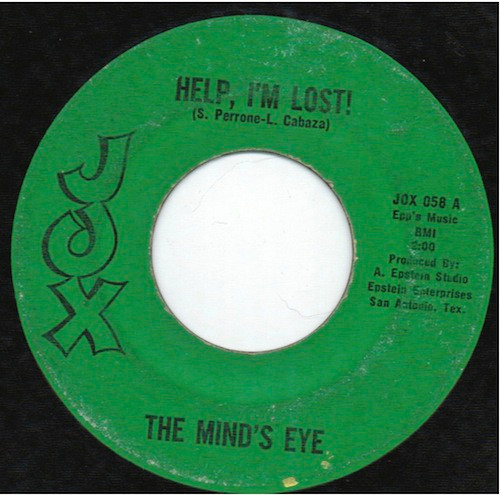
While it’s easily the most ornate production to feature here, The Mind’s Eye’s sole A-side is still very much in keeping with the garage scene that the San Antonio group grew up in. “Help I’m Lost” is a genuine psychedelic track, but its cellos and trippy effects are undercut by a wheezy organ, trebly guitars, and the same homespun charm that characterizes the other entries on this list.
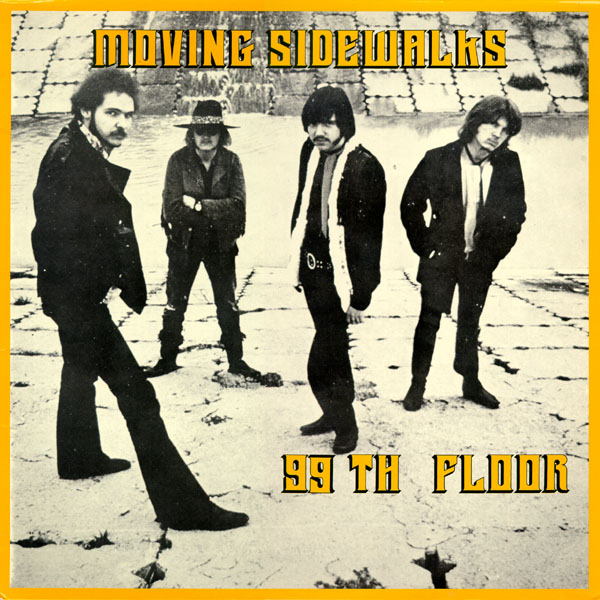
If this track sounds a little tamer than some of the preceding ones, don’t be too surprised; after all, Houston’s Moving Sidewalks are the band that would eventually morph into ZZ Top by the end of the sixties. With that said, the spirit of garage rock is alive and well on “99th Floor,” and if the song title itself isn’t an homage to Roky Erickson’s group, that buzzing guitar sure seems to be.
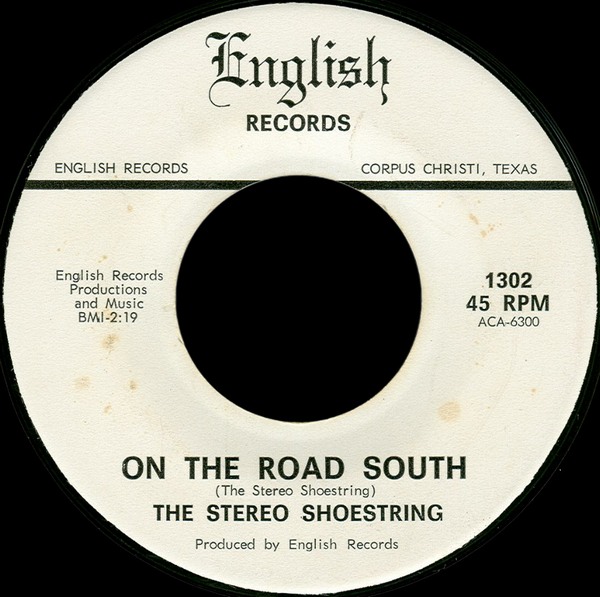
Borrowing both a riff and lyrics from The Pretty Things’ then-recent single, “Defecting Grey,” The Stereo Shoestring may not have made the most original debut ever, but their inaugural (and only) A-side is still a stunner nonetheless. “On the Road South” is a pummeling track – its combination of breakneck pacing and heavy guitars were virtually unmatched upon its spring 1968 arrival – and it charted an intriguing path forward for rock music.


